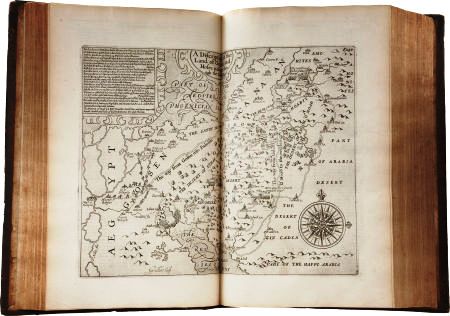
Explorer, privateer, Queen’s favourite, supposed introducer of the humble spud, finally imprisoned and executed – the story of Sir Walter Ralegh is well known. He also wrote many books, The historie of the world - written in the Tower of London - being his most ambitious. Stretching to nearly a million words, it starts with Creation and ends with the second Macedonian war, in 146 BC. With intricate maps depicting legions crossing Europe and Asia, and illustrations of battles, it was a popular title: there were at least eleven editions in the 17th Century, and one each in the 18th and 19th*.
At one point Ralegh ruminates on the age of the Earth, querying the Biblical narrative: “many things have been digged up out of the earth, of that depth, as supposed to have beene buried by the generall floud, without any alteration either of substance or figure”. Controversial for its time, he goes on: “the gold which is daily found in Mynes, and Rockes, underground, was created together with the Earth”. The book is, however, primarily a history of gods and men, not of rocks and nature. Ralegh’s initial belief that “the end and scope of all History, to teach by example of times past, such wisdom as may guide our desires and actions” morphs into pessimism as the narrative deepens into continuous wars.
*Mark Nicholls and Penry Williams, ‘Ralegh, Sir Walter (1554–1618)’ODNB (2004)
Mystery Solved!
Assistant Librarian Wendy Cawthorne has discovered that the
mystery book described in March’s Geoscientist was Naturhistorischer Atlas (1824-26) by August Goldfuss (1782 – 1848). Thanks to John Henry for his interest and suggestions, and to Rupert Baker, Library Manager, Royal Society, for showing us the complete work.
- The Library operates a sponsorship scheme to help preserve and restore its rare books. For more information, contact Michael McKimm in the library, or see the Sponsor A Book page on the Society’s website: www.geolsoc.org.uk/sponsorabook